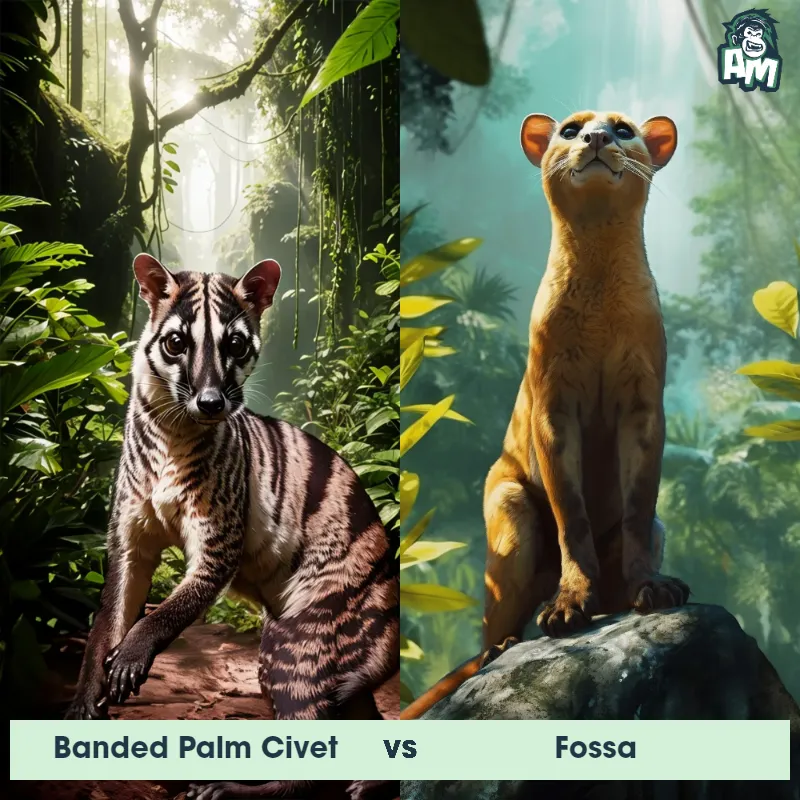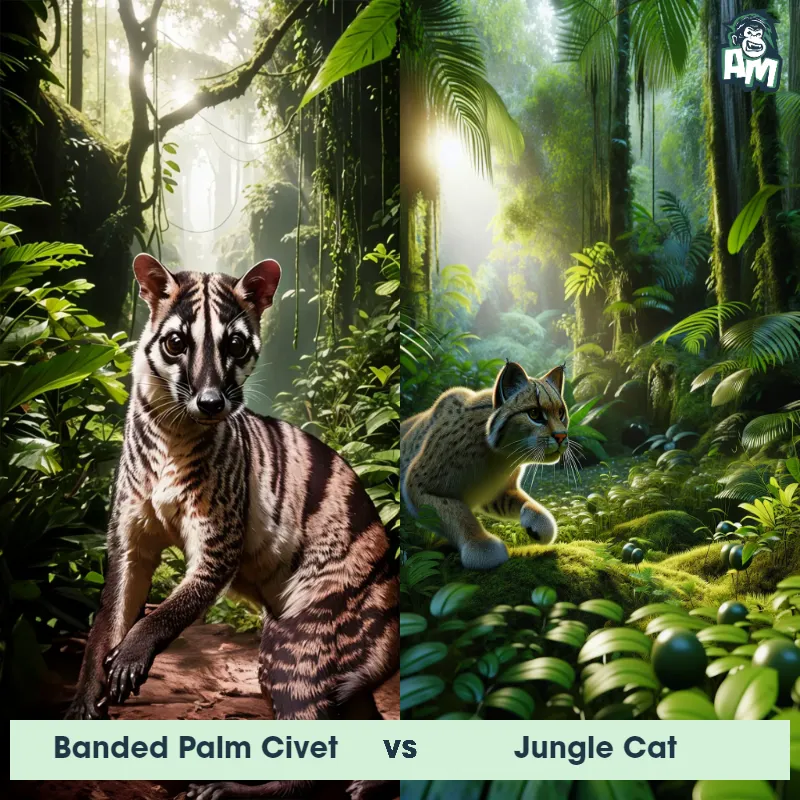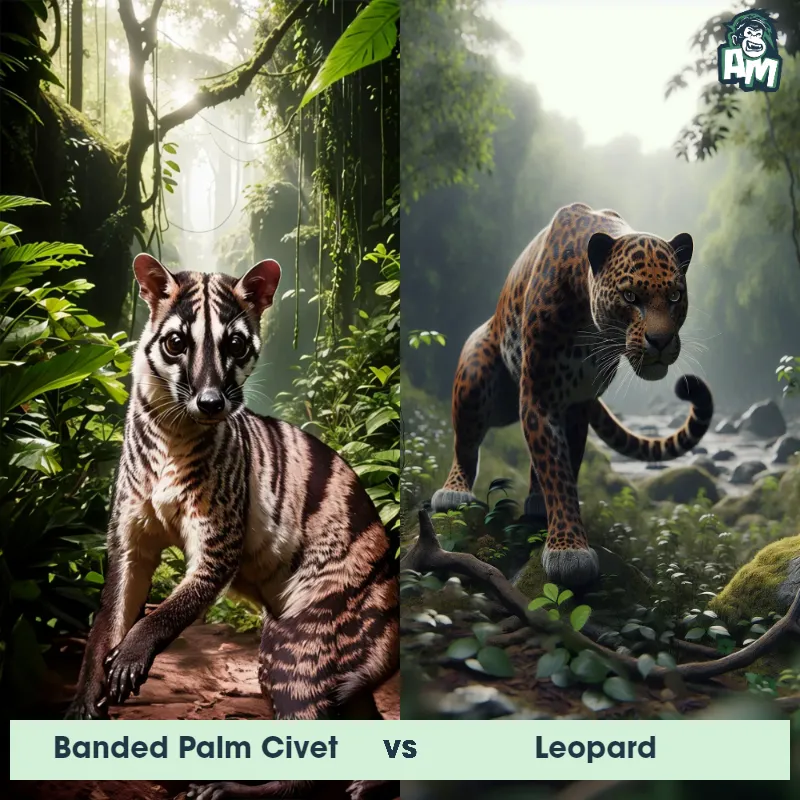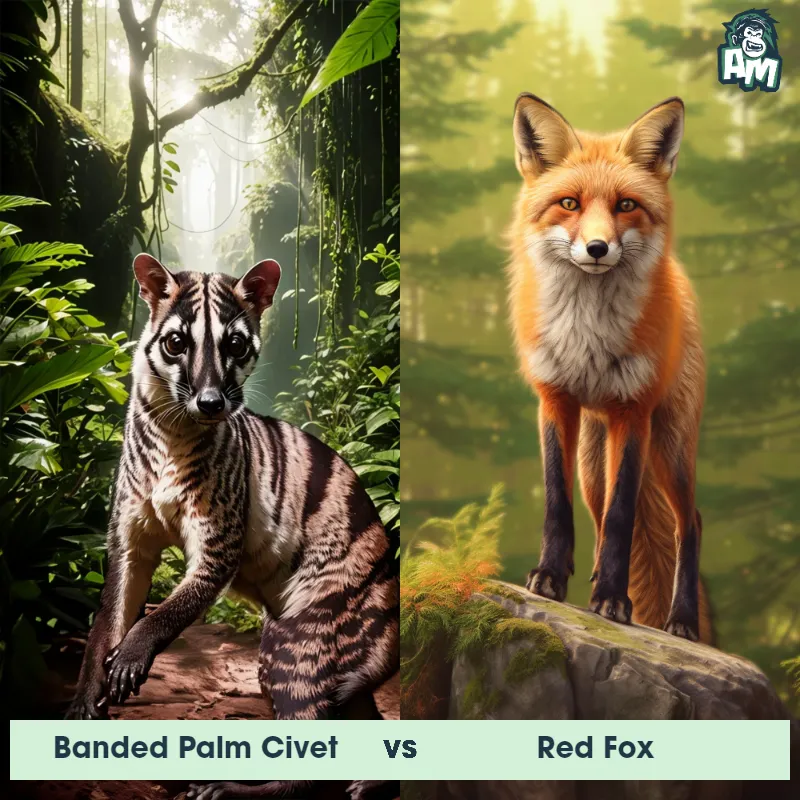The Banded Palm Civet
The Banded Palm Civet, also known as the Common Palm Civet, is a small carnivorous mammal native to Southeast Asia. It has a slender body with a length ranging from 40 to 55 centimeters, and its fur is predominantly dark brown or black, with distinct banded patterns along its back and sides. With large eyes and a pointed snout, the Banded Palm Civet possesses excellent night vision and a keen sense of smell, which it utilizes to hunt for its prey. It is an arboreal animal, primarily spending its time in trees and using its long, prehensile tail for balance.
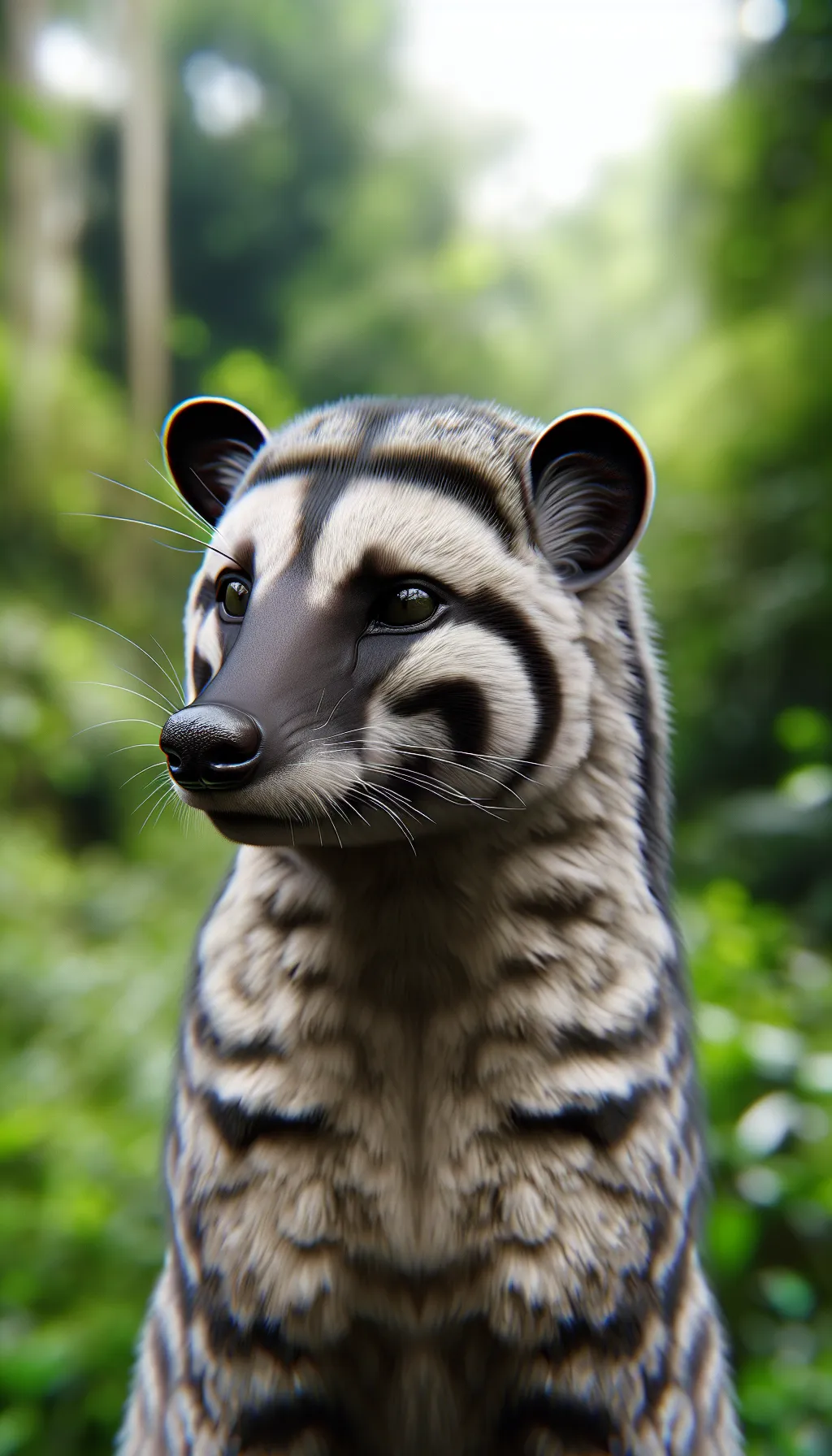
| Banded Palm Civet | |
|---|---|
| Size | 40-50 centimeters (15.7-19.7 inches) |
| Weight | 2-4 kilograms (4.4-8.8 pounds) |
| Speed | 14mph (23km/h) |
| Key Strength | Sharp claws and agile climber |
| Biggest Weakness | Small size and non-aggressive nature |
| Scientific Name | Hemigalus derbyanus |
| Family | Viverridae |
| Habitat | Lowland forests |
| Geography | Southeast Asia (Malaysia, Sumatra, Borneo, Thailand) |
| Diet | Omnivore - Fruit, nectar, insects, small mammals, birds |
| Lifespan | 1 years - 2 years |

The Banded Palm Civet
The Banded Palm Civet, also known as the Common Palm Civet, is a small carnivorous mammal native to Southeast Asia. It has a slender body with a length ranging from 40 to 55 centimeters, and its fur is predominantly dark brown or black, with distinct banded patterns along its back and sides. With large eyes and a pointed snout, the Banded Palm Civet possesses excellent night vision and a keen sense of smell, which it utilizes to hunt for its prey. It is an arboreal animal, primarily spending its time in trees and using its long, prehensile tail for balance.
Fun Fact: The Banded Palm Civet has a unique ability to digest and process the coffee cherries it consumes, leading to the creation of a highly sought-after coffee known as "Kopi Luwak." The civet eats the cherries, the beans pass through its digestive tract, and enzymes in the civet's stomach remove the outer layers, resulting in a distinct flavor profile for the coffee beans.
| Banded Palm Civet | |
|---|---|
| Size | 40-50 centimeters (15.7-19.7 inches) |
| Weight | 2-4 kilograms (4.4-8.8 pounds) |
| Speed | 14mph (23km/h) |
| Key Strength | Sharp claws and agile climber |
| Biggest Weakness | Small size and non-aggressive nature |
| Scientific Name | Hemigalus derbyanus |
| Family | Viverridae |
| Habitat | Lowland forests |
| Geography | Southeast Asia (Malaysia, Sumatra, Borneo, Thailand) |
| Diet | Omnivore - Fruit, nectar, insects, small mammals, birds |
| Lifespan | 1 years - 2 years |
Banded Palm Civet Matchups
We use AI to simulate matchups between the Banded Palm Civet and other animals. Our simulation considers size, strength, and natural predatory behaviors to determine the most likely outcome.

Can't find the Matchup you want?
Create Your Own MatchupBanded Palm Civet: Diet, Predators, Aggression, and Defensive Behaviors
What do Banded Palm Civets eat?
Banded Palm Civets are omnivores, meaning they have a diverse diet that includes fruits, insects, small mammals, birds, eggs, and occasionally even carrion. They are also known to eat plant matter such as leaves and flowers.
Do Banded Palm Civets have any predators?
Yes, Banded Palm Civets do have predators in the wild. Large birds of prey, such as eagles and owls, are known to prey on them, along with carnivorous mammals like leopards and pythons. Humans also pose a threat to Banded Palm Civets through habitat destruction and hunting.
Are Banded Palm Civets aggressive?
Banded Palm Civets are generally solitary and not aggressive towards humans or other animals. However, they may become defensive if they feel threatened or cornered. In such situations, they may hiss, growl, or even attempt to scratch or bite in order to protect themselves.
Do Banded Palm Civets fight?
While Banded Palm Civets are not typically territorial animals, conflicts can still arise between individuals, especially during the breeding season. These conflicts may involve competition for food, mating partners, or territory and can result in fights that involve biting, scratching, or vocalizations.
How do Banded Palm Civets defend themselves?
When threatened, Banded Palm Civets have several defense mechanisms they can employ. They may release a foul-smelling musk from their anal glands as a deterrent, spray urine, make loud vocalizations to scare off predators, or use their sharp claws and teeth in self-defense.
What is the biggest weakness of Banded Palm Civets in a fight?
Despite their sharp claws and teeth, Banded Palm Civets are relatively small and lightweight animals, making them vulnerable to larger predators. In a fight, their size and strength may be their biggest weakness, especially when facing off against larger carnivores with more power and agility.
Fun Fact: Despite being categorized as a carnivorous mammal, the Banded Palm Civet has a primarily frugivorous diet, meaning it predominantly feeds on fruits and berries. This behavior plays a crucial role in seed dispersal, as the civet consumes the fruit but excretes the undigested seeds in different areas, contributing to plant growth and distribution across its habitat.
Fun Fact: The Banded Palm Civet possesses specialized scent glands called perineal glands, located near the base of its tail. These glands produce a strong-smelling secretion that the civet uses to mark its territory and communicate with other members of its species. The scent marks serve as a way for the civets to establish their presence and prevent potential conflicts with other individuals.



